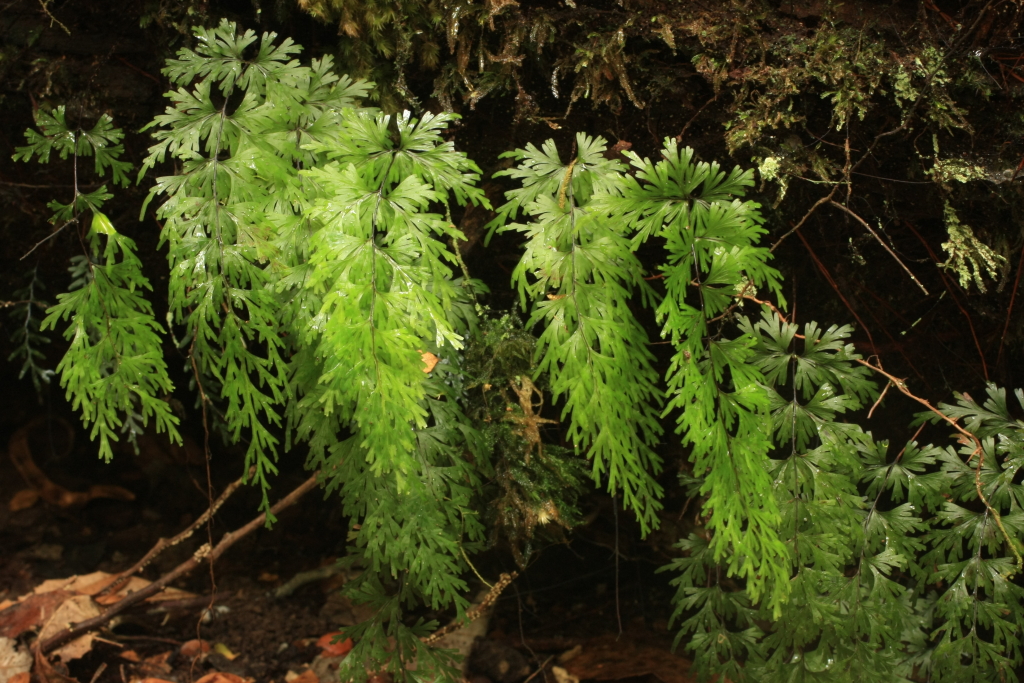Hymenophyllum flabellatum
Labill Shiny Filmy-fernRhizome creeping, slender and wiry, covered with yellow-brown hairs when young. Fronds usually distant, often pendent, 5–25 cm long. Stipe with tuft of hairs at base, slender, not winged. Rachis slender, winged in upper part, sometimes with scattered hairs. Lamina 2–3-pinnate, ovate to linear-oblong, pale yellow-green, shiny; pinnae rhomboidal to fan-shaped; ultimate segments linear, terminal segment often elongate; margin entire; apex rounded or notched. Sori numerous, terminal on short lateral pinnae segments, immersed in lamina; indusium deeply 2-lipped, usually slightly wider than segment, oval, apical margins entire; receptacle short.
VVP, GipP, OtP, WaP, CVU, GGr, EGL, EGU, WPro, HSF, HNF, OtR, Strz, MonT, HFE, VAlp. Also Qld, NSW, Tas. (including Cape Barren Is. and King Is.). New Zealand, Samoa, Tahiti. Widespread in southern half of State, in wet forests on tree-ferns, trees or fallen logs. It often grows with Polyphlebium venosum.
Extremely variable in habit-plants growing in brighter situations commonly have relatively short, crowded and overlapping pinnae, but in deep shade plants may form a delicate curtain of long, pendulous fronds. A variant of H. flabellatum typically growing on Cyathea australis is stunted and has overlapping pinnae. In common with H. rarum, the indusium is mostly narrower than the subtending segment, longer than wide and often with a V-shaped lower edge. However, the colour, overall branching pattern of the frond and the tuft of hairs on the rhizome readily distinguish this variant from H. rarum.
Entwisle, T.J. (1994). Ferns and allied plants (Psilophyta, Lycopodiophyta, Polypodiophyta). In: Walsh, N.G.; Entwisle, T.J., Flora of Victoria Vol. 2, Ferns and Allied Plants, Conifers and Monocotyledons, pp. 13–111. Inkata Press, Melbourne.
 Spinning
Spinning


